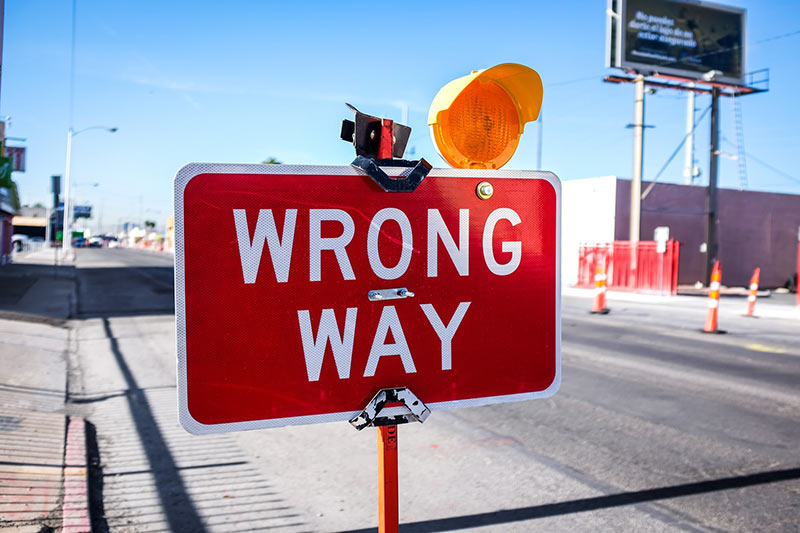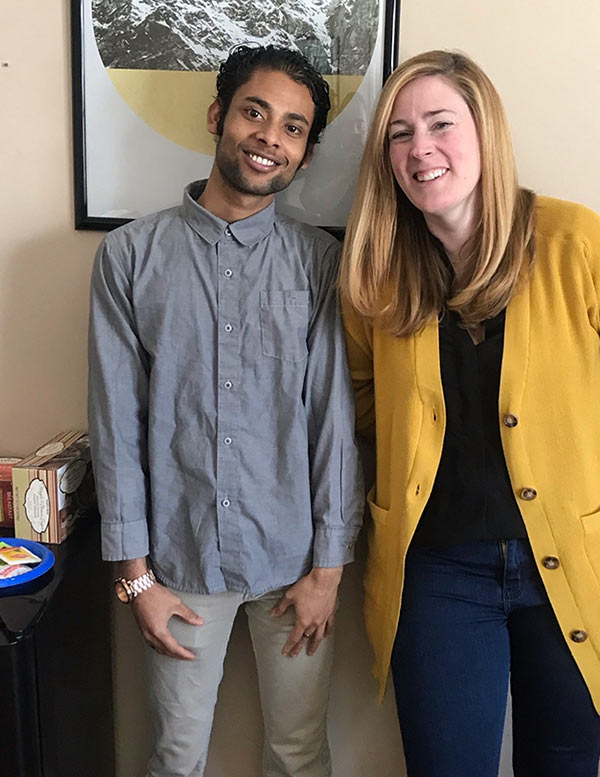What are some common SEO mistakes? Overall it comes down to two issues. One is overdoing it so much that it’s all the reader notices. The other is not doing enough or any at all. Optimizing your content so it will be more likely to get indexed and ranked by a search engine is crucial for the success of your site. What good is your blog, or your home page, if nobody can find it?
While SEO can seem like some sort of complicated Hoodoo, it’s really not. Sure there are a lot of bizarre acronyms that get thrown around (What the hell is a SERP anyway?), but it’s basically a matter of writing good content that is well formatted and easy to find on your site. Still, people get themselves in a twist sometimes and I come across pages and posts on their sites that need a lot work.
Here’s some of the biggest and most common SEO mistakes I come across. And the best part is, they all have fairly easy fixes and don’t require the local Hoodoo man!
1: Not having descriptive titles on pages and posts
Titles are the first thing a search engine scans on your site. Make sure to include words that you want to be noticed (indexed) for in the title of your page or post.
“About Us” on a SERP (Search Engine Results Page) becomes “Learn More About XYZ, Inc.”
“Contact” becomes “Best way to contact XYZ, Inc.” and so on.
Here’s a neat trick. If a descriptive keyword title going to be too long for your navigation layout, you can make it shorter by going to Appearance > Menus and customizing the name in the menu.
2: Not using alt tags
I know they say a picture is worth a thousand words, but without a decent alt-tag,it’s saying nothing to a search engine.
I have a few friends who are visually impaired and they are avid internet users. On a long car ride where they were on the web most of the time, they told me what annoys them the most about getting web content via their reader app is that images on websites without alt tags are simply read as “Jay Peg”. They are living a FOMO nightmare of not knowing what’s going on with sizable amount of site content.
Plus, no alt tags is a big SEO copout. Why let a bot just see “image004.jpg” when instead it could see “the offices of XYZ, Inc. 123 Bradley Street in Salem, MA” in the alt tag?
3: Not using the right categories and tags on your posts
Picture this. You walk into the main storage area of the Museum of Natural History. You are an etymologist looking for a certain class of beetle for a research paper. You are so psyched to check out a rare specimen of the Paraguayan Stank Beetle. As you walk into the room, you are met with a random jumble of specimen cases. Everything is everywhere, just box after box on the shelves with no labels anywhere to be seen.
How are you ever going to find that incredible Paraguayan Stank Beetle?
When you just publish post after post without organizing them into categories and tags, your readers are going to have a similar feeling of frustration when they go to your blog. And, without classifying your posts into categories and tagging them, you are making it tougher for search engines to index your blog’s content.
4: Not blogging, or not doing it right
“I don’t have time.”
“I don’t have anything to write about.”
“Who’s going to read it anyway?”
Well…
Make time (or hire a professional).
Be creative and you will find something to write about. Blogging is a niche game.
People will read it. Good content, well promoted will bring people to your site.
5: Trying to do too much of a good thing
Excessive header tag abuse and keyword stuffing
Sometimes people ask me to help them with their site content and give them some tips. After 5 minutes of looking at what they have already, I can tell they checked out the 2004 edition of “SEO for Dummies” from the local library and skimmed a couple of chapters. Their meta-descriptions contain more words than the actual page content. Header tags are used on content that should just be paragraphs. (the logic being that search engines notice headers more) And paragraphs contain obvious keywords repeated to an eye-watering, cringe-inducing level.
6: Ignoring/Overthinking your metrics
Creating great content that your audience will find link-worthy is great, but it’s really only half the battle. Taking the time to study which content is your most visited is worth it. Are people reading your client profiles more than your tutorials? Look at your analytics as your field guide to what’s working for your audience.
Conversely, obsessing over every visitor impression and click can be an ineffecient use of your resources. Relax a little bit and focus on the big picture stuff. Number of site visits going up and up? Great! Where are they going on your site? You are doing something right and now just need to figure out how that can be applied to other areas of the site. Noticed your bounce rate is ticking up from last quarter? See how you can fix that.
7: Re-posting content from other sites
If I had a nickel for every time a client emailed me an existing article’s link with the instructions:
“Put this on the blog”…
And they expect to be able to copy and paste an article written for a different site onto their site and be done with it. It doesn’t work that way. For one thing, people who write articles for a living put a lot of time, effort and experience into what they do and when you just scan their work and plop it onto your own site it tends to irritate the heck out of them.
Even if the article is about you, or your company, it still doesn’t do any good to just copy the content into your site. Google does scan the web for duplicate content and it does flag people for plagiarizing (even if the content is about them).
I worked for a client who’s blog content manager spent months basically copying post content from sites with more traffic into their site. He would toss in a byline credit and insist that it was all ok. It was “curated content”. Unfortunately, Getty Images and Google didn’t see it the same way and the client received a warning from Google. Getty Images also sent a hefty bill for each post that used the original articles’ images. Whoopsie.
Bottom line, if you want to refer to another site’s post about you or your company, write a paragraph or two about the fact that you were profiled by another site, give credit where it’s due, and then link to the original post. It’s good karma.
8: All style and no substance on the home page
What your visitor sees:
A big high-end stock image (literally called the “hero image in the trade) with maybe an inspiring sounding word or two superimposed over it.
A button that says “Learn More”.
A banner that says something vaguely marketing-like…
And that’s it.
What a search engine sees:
*crickets*
Unless your designer was very savvy and wrote a hell of a good alt tag for the hero image, a search engine spiderbot is going to crawl that page, index the marketing buzzwords, the navigation that says “home”, “about us” “contact” and that’s it.
So…what is that bot going to index you for?
Have you ever been to a business networking event where you were told to give your “Elevator pitch”? It’s what happens when you meet someone, and they ask “What do you do?”. You have about 20 seconds to encapsulate your business into a few sentences. And that’s about the length of a SERP page description for your site.
I used to just say “I’m a web designer.” I assumed it was obvious what that meant and people would instantly understand exactly what I do. But that’s not necessarily the case. In my line of work, one tends to not only come up with the colors, fonts and layouts for the site, but also work on the way a contact form will function, or set up an online store, or write page content.
So now, my “elevator pitch” is: “I build WordPress sites for businesses that allow them to express who they really are and get control over their presence on the web.” Your home page should, at the very least, have a well written elevator pitch as close to the top of the page as possible.
9: Not enough content on a page. Or, too much.
Similar to the style over substance issue but it’s almost worse when you visit a page by clicking on “About Us” in the menu and all that’s there is about 4 sentences of bland marketing copy. Or, an “Our Services” page that just contains a bulleted list of services.
Humans crave “story”. And search engines love stories too. Not because it awakens their sense of adventure and romance, but because stories are content. Search engines crave “content”. Content naturally lends itself to indexable keywords like your name, a service you provide, where you are located, and how people can do business with you.
Then, there’s the opposite problem. We’ve all been to that recipe post during a search for “easy cornbread” only to wade through 12 paragraphs describing Aunt Harriet’s entire life story before getting to her recipe for cornbread. Focus on what your readers are likely to be most interested in reading and serve it to them. Enough said.
10: Hard to read pages with long blocks of text
I literally heard you throw up your hands in despair. “You just said write a decent amount of content!”
I did. Your challenge is…It needs to be easy to read for bots and people. That means breaking up your article into sections, topped with headers and short, easy to read paragraphs. Make your sentences short. Use descriptive words, but not excessively. If you make it easy for a human being to skim over and digest, then a search engine shouldn’t have any trouble either.
The rule of thumb for enough content on a page for a search engine to consider it worth indexing, and for humans to consider worth reading, is 300 words. Luckily, WordPress has a built in word count function so you can easily see how you’re doing.
Another great way to see how readable your text is is to use the Yoast SEO plugin on your site. There’s a lot of bells and whistles even on the unpaid version, but one of the best features is the “Readability” scoring tool.
Trust me. With a little practice, and using some helpful tools, it won’t be long before you will be able to look at your site in much the same way a search engine would and know what works best for you and your audience.









